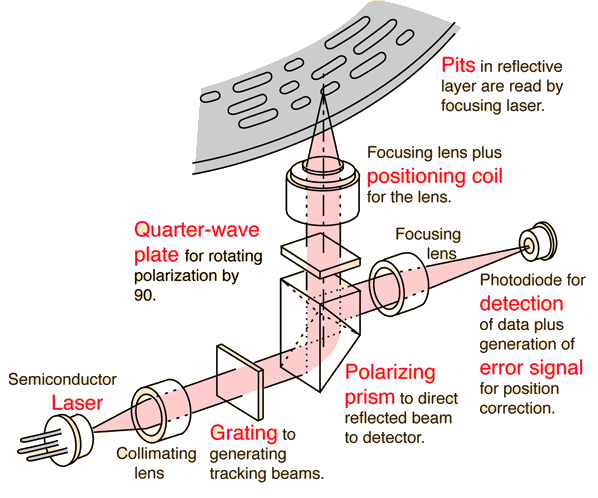Compact Disc Audio
Analog sound data is digitized by sampling at 44.1 kHz and coding as binary numbers in the pits on the compact disc. As the focused laser beam sweeps over the pits, it reproduces the binary numbers in the detection circuitry. The same function as the "pits" can be accomplished by magnetooptical recording. The digital signal is then reconverted to analog form by a D/A converter.
The tracks on a compact disc are nominally spaced by 1.6 micrometers, close enough that they are able to separate reflected light into it's component colors like a diffraction grating.

CD concepts
Sound reproduction concepts
Reference
Rossing
Physics Teacher, Dec. 87
| HyperPhysics***** Sound ***** Optics | R Nave |